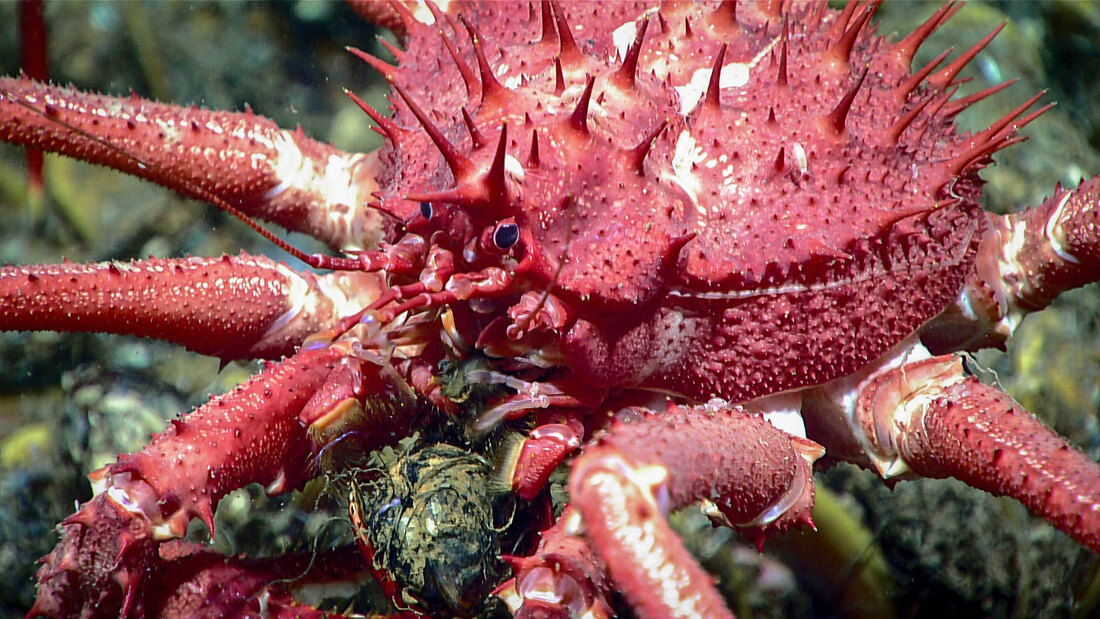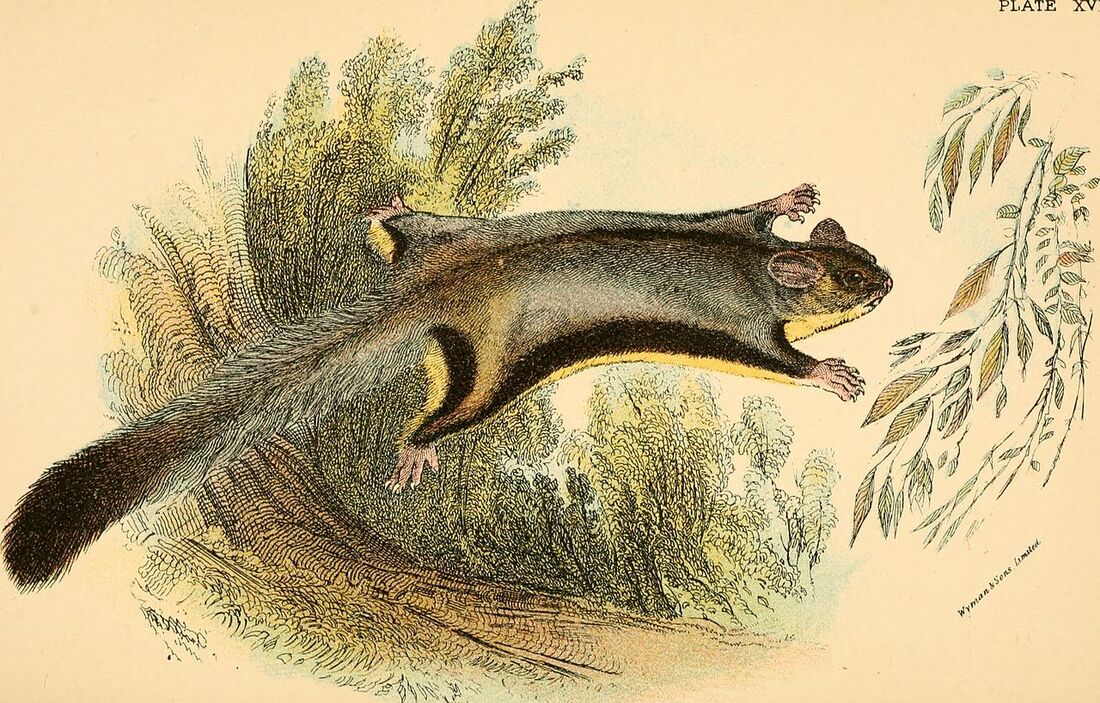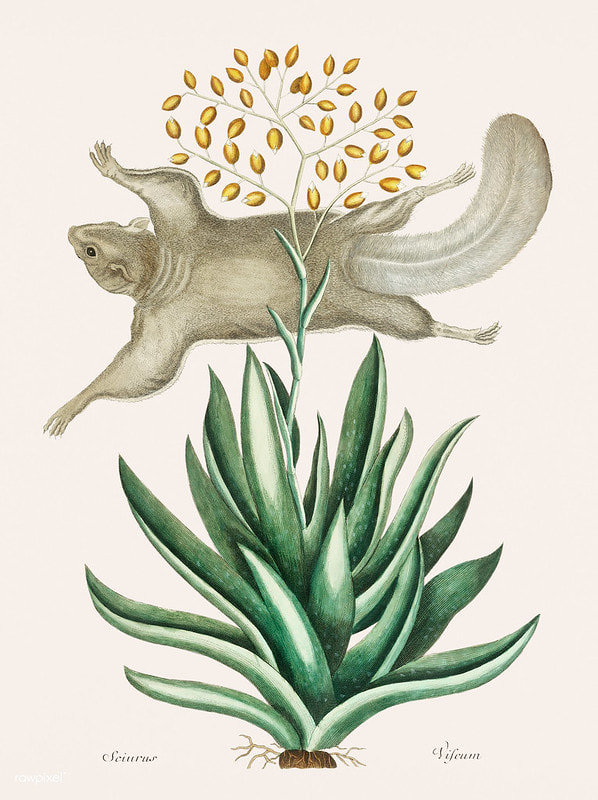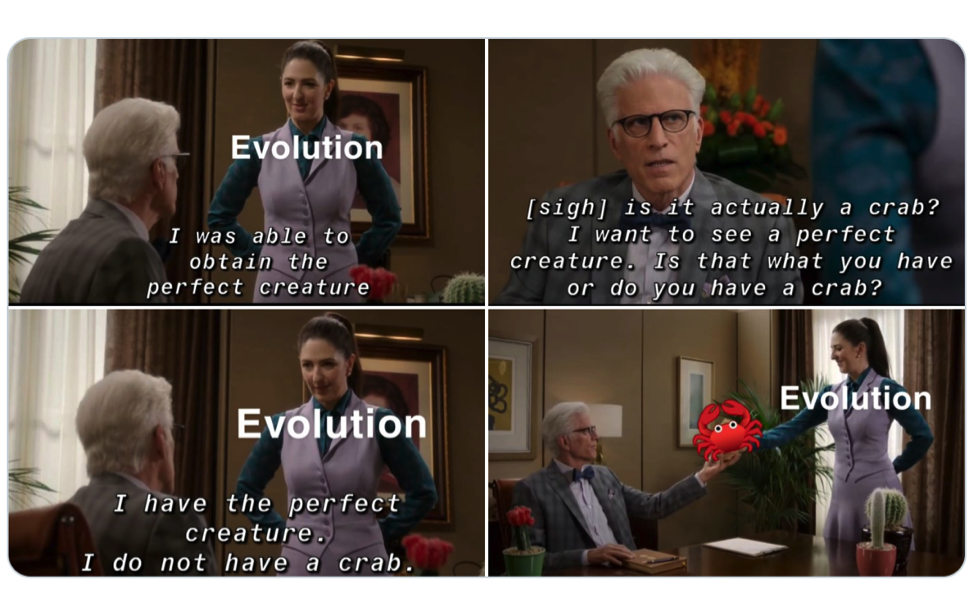|
By Alex Tesar We here at the Back to the Sea Society hate to be accused of favouritism. When it comes to marine life, we love it all, from anemones to zooplankton. Jellyfish: yes. Whales—whale, of course. But there is one group of animals that may be entitled to bear the crown of nature’s most perfect creature. I speak, of course, of crabs. To understand why, we must first look at some things that aren’t crabs. Sorting the crabs from the crab-nots can be complicated. Consider, for example, the hermit crab: protruding eyes on stalks, a shell, and the trademark claws that suggest the quintessence of crabbiness. You would be forgiven for thinking that you were looking at a crab. However, despite their name, hermit crabs aren’t actually crabs. Though they resemble “true crabs,” hermit crabs are in fact a different kind of crustacean that happens to look very similar. And they are far from alone: among those living in disguise are the king crabs, which may have themselves evolved from hermit crabs (known, delightfully, as the “hermit-to-king” hypothesis), as well as hairy stone crabs and porcelain crabs. The king crab is not a crab, but it is a king. Photo credit: NOAA Office of Ocean Exploration and Research, Gulf of Mexico 2017 The theory that crab-like crustaceans tend to evolve from non-crab ancestors is known as “carcinization.” The word literally means to become cancer-like, but think of the astrological sign, not the disease. The phenomenon was first described by a man named Lancelot Alexander Borradaile, who has perhaps one of the best names in the history of science. Borradaile coined the term while studying the evolution of the humble hermit crab, describing it as “one of the many attempts of Nature to evolve a crab.” Why does Nature want to evolve a crab so badly? Well, we know that evolution “selects” for traits that are particularly well-suited to a given environment, and there seems to be something about the crab-like shape that works very well when it comes to surviving and thriving in the water—so what works for “true crabs” might also evolve in other species that aren’t close genetic relatives. This is called parallel evolution. There are other examples of this in nature, too. In Australia, many marsupial species have evolved separately from mammals in the rest of the world but still look strangely familiar because they’ve faced similar evolutionary pressures—like the flying phalanger and the flying squirrel, which both glide from tree to tree. It appears that nature likes to get crabby. Of course, there’s no such thing as a perfect animal in evolution, only the creature that’s best adapted to its time and place. But when you come to the touch tank this summer, you can get hands-on and decide for yourself whether you are simply holding a hermit crab or touching a miracle. Via Twitter, @PattonPray
0 Comments
Leave a Reply. |
Categories
All
We send blog recaps with in all our quarterly newsletters!
|




